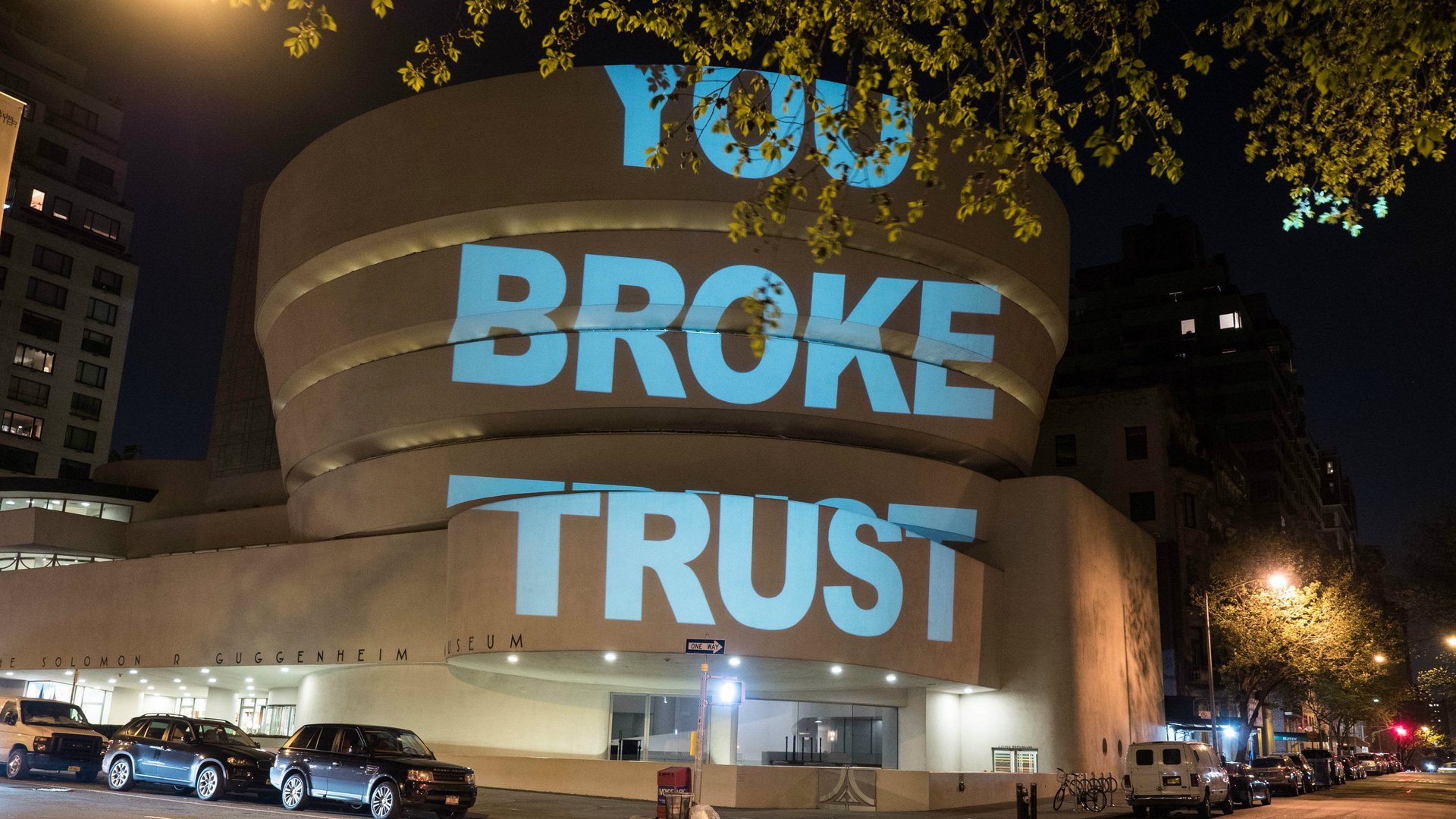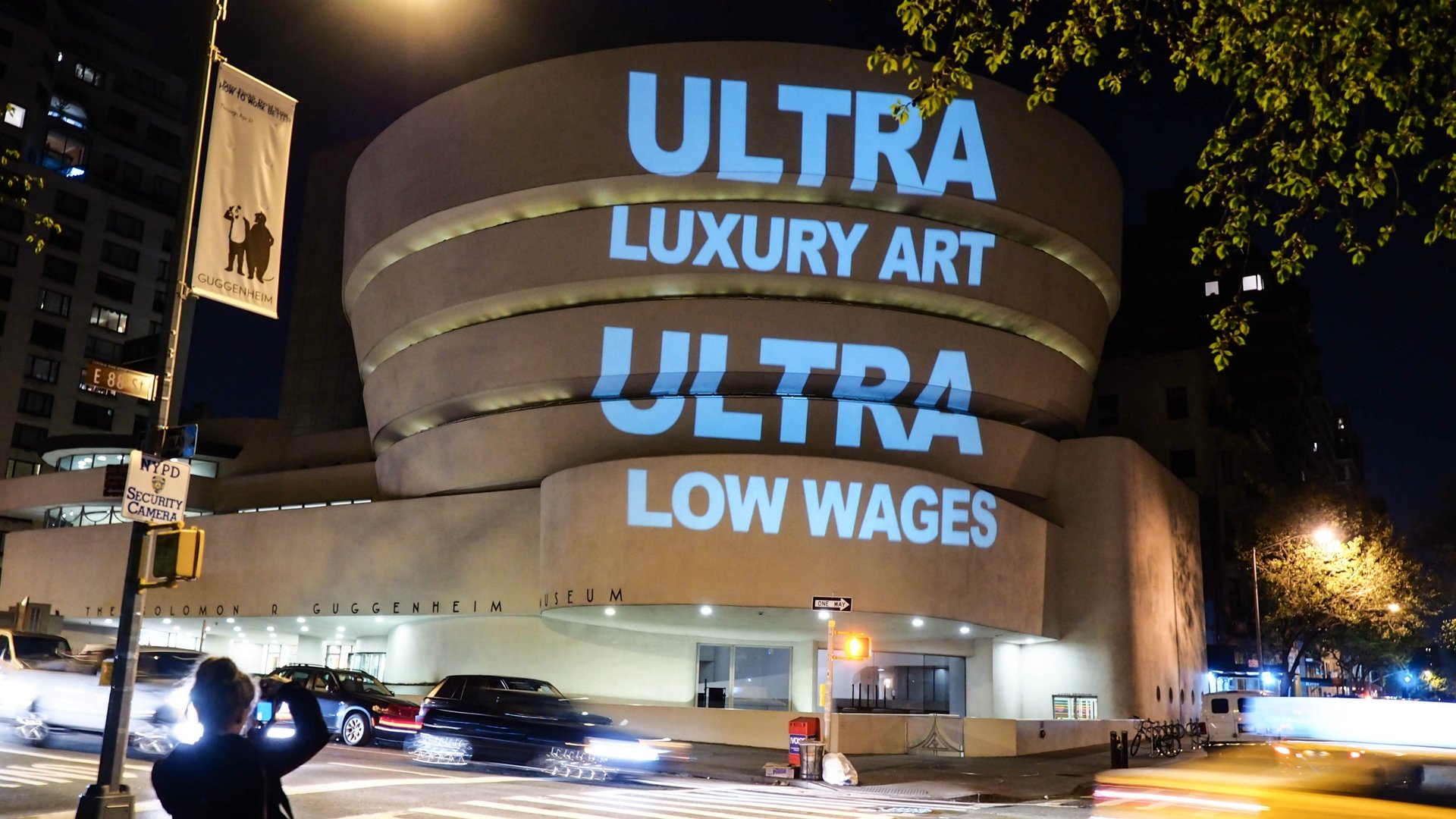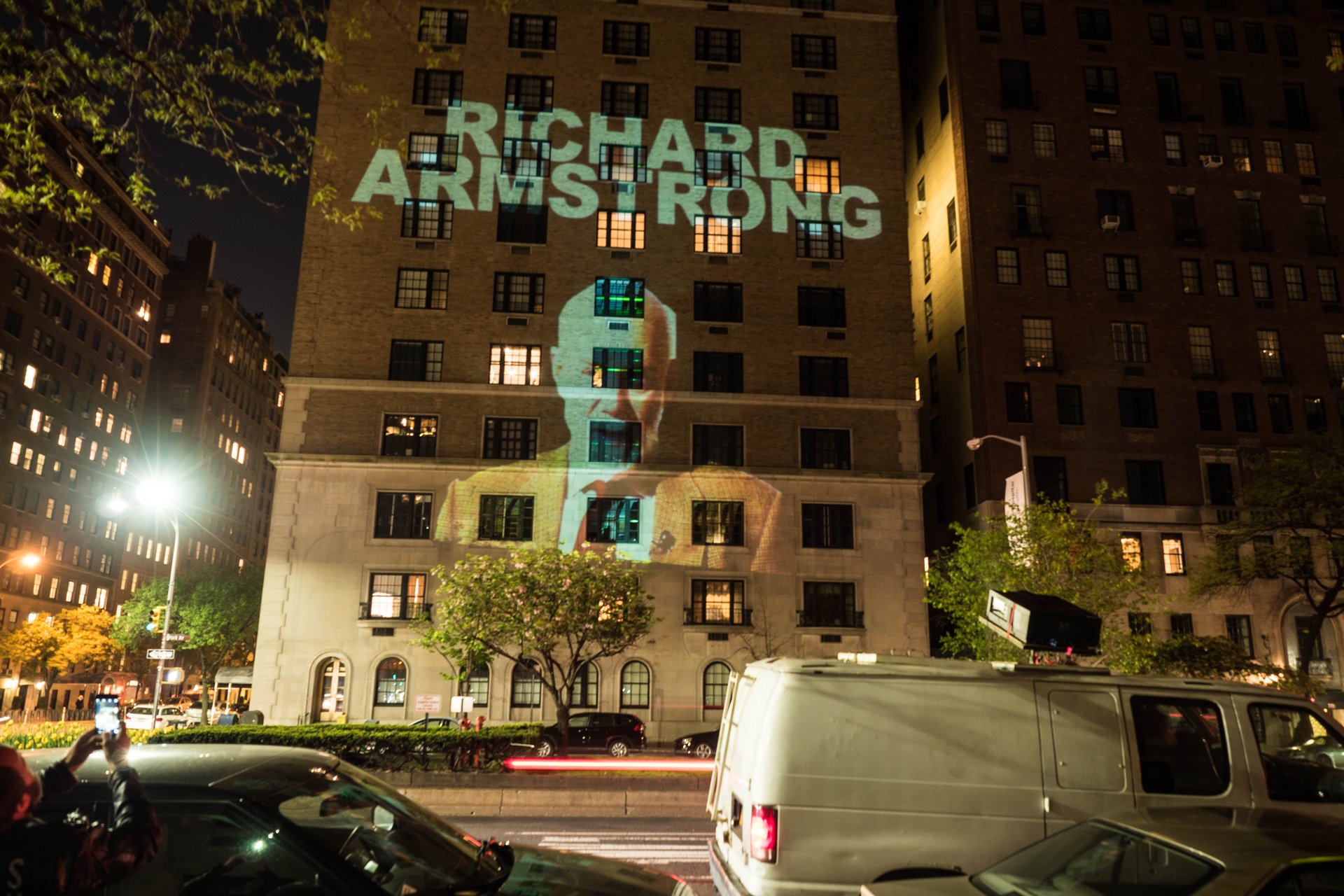“You broke trust”: Activists are shaming the Guggenheim on its own facade
In 2008, the Guggenheim Museum in New York City commissioned artist Jenny Holzer to project some nice poetry on its newly restored façade. Now the technique has been used to hurl accusations at the museum itself.


In 2008, the Guggenheim Museum in New York City commissioned artist Jenny Holzer to project some nice poetry on its newly restored façade. Now the technique has been used to hurl accusations at the museum itself.
In a similar large-scale light projection on April 27, artists from the activist groups Global Ultra Luxury Faction (GULF) and the Illuminator beamed angry messages on the Frank Lloyd Wright-designed architectural landmark, targeting the museum’s trustees.

Their incendiary light show was meant to protest the Guggenheim’s board of trustee’s April 13 decision to end talks with Gulf Labor Coalition, a group of artists and writers campaigning for migrant workers’ rights in Abu Dhabi.
Since construction began in Saadiyat Island (“Happiness Island”)—the United Arab Emirates’ planned cultural mecca anchored by outposts of the Louvre, New York University and the Guggenheim—Human Rights Watch and other NGOs have alleged “systematic human rights violations” affecting thousands of low-paid Indian, Pakistani, Bangladeshi Sri Lankan and Nepalese construction workers. The building of the Guggenheim Abu Dhabi began in 2011, but has been stalled for reasons the museum has declined to elaborate on. When completed, the 320,000-square-foot (30,000-square-meter) museum will be the largest among Guggenheim’s four outposts.

Guggenheim museum director Richard Armstrong affirmed the board’s decision to end talks with Gulf Labor, via a mass email accusing the group of “shifting its demands” and “spreading mistruths about the project.” In an emailed statement, the Guggenheim denounced last week’s protest light projections, calling it publicity stunt:
This latest action by Gulf Labor is another example of their willingness to attack the Guggenheim for easy publicity versus pursuing a program of thoughtful advocacy. Their demands are not only beyond the Guggenheim’s direct line of influence but beyond the influence of any single arts institution. We are leveraging our advocacy to its fullest, but the issues they are focused on are highly complex and involve many players. The Guggenheim and our UAE partner, the Tourism Development & Investment Company, have dedicated significant energy and resources to and made measurable progress on the issue of workers’ welfare.
The following evening, the artists’ protest became even more targeted, as members of GULF and the Illuminator drove an unmarked white van to the Park Avenue home of Guggenheim board chairman William Mack and replayed their angry words on the face of his posh building.
The light show is just the latest example of ”agit prop art” that the artists and writers involved with Gulf Labor have unleashed in the last six years, as Gulf Labor coalition member and NYU professor Andrew Ross explains. Last May, GULF activists staged a sit-in protest at the Guggenheim and shut down the museum for the day.
“The pressure is the only thing that has gotten them [the museum trustees] to come to the table at any point and so the pressure will continue,” he says. “If they do not take action soon, the Guggenheim name will be further tarnished by its association with human rights abuses.”
On April 29, a group of artists featured in a Middle East and North Africa-themed exhibition currently at the Guggenheim issued a statement expressing their disappointment over the museum’s efforts to distance itself from the issue and encouraged the board to reconsider their decision.

As a reaction to the perilous labor conditions in the Middle East, a Gulf Labor spin-off initiative, Who Builds Your Architecture, is campaigning to introduce language about fair labor practices into architecture’s standard professional code of ethics.
The Guggenheim Abu Dhabi’s architect, Frank Gehry, said in 2014 that improving working conditions in the construction site of the $774 million (£530 million) art mega complex was a “moral responsibility.” The starchitect who designed the game-changing Guggenheim Bilbao has also said that there was language in his contract about fair labor—but he has yet to make that wording public, says Ross.
In 2014, the late architect Zaha Hadid attracted controversy when she denied culpability over the deaths of almost 900 (estimates vary) Indian and Nepalese construction workers building the stadium she designed for the 2022 World Cup in Qatar.